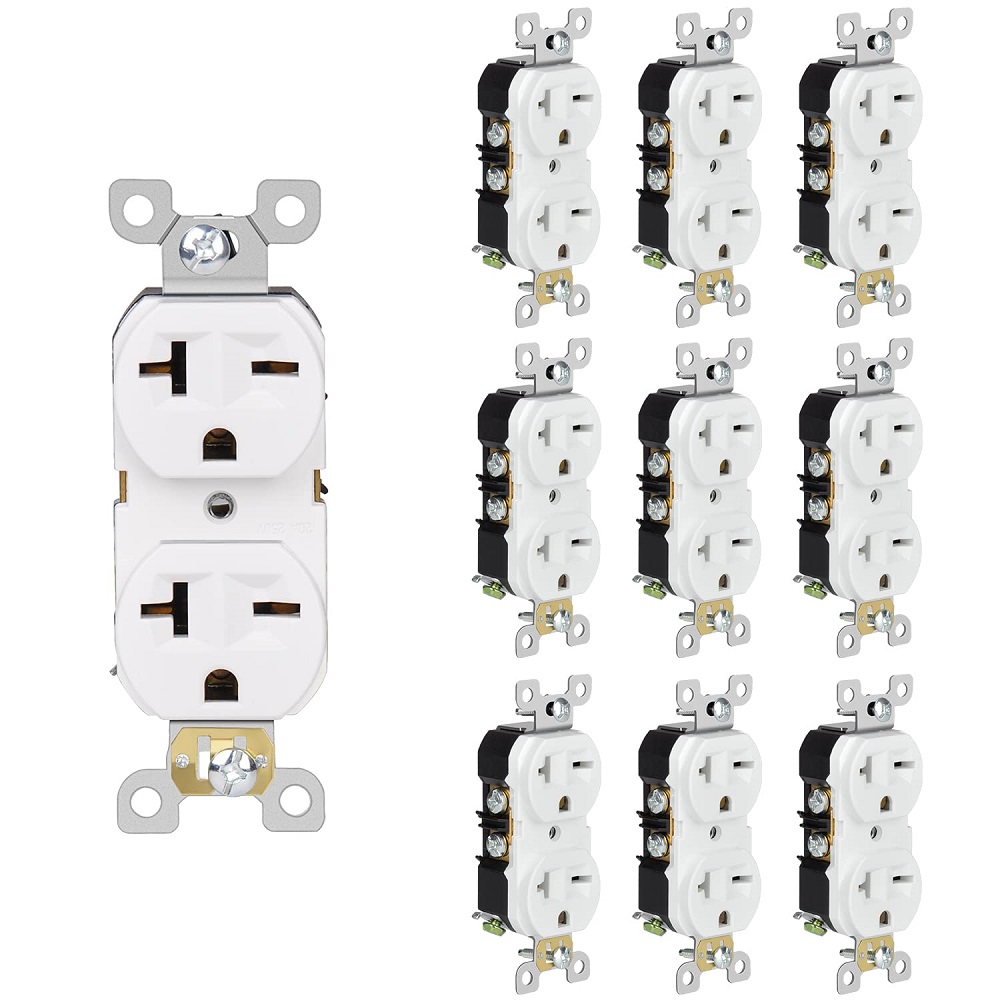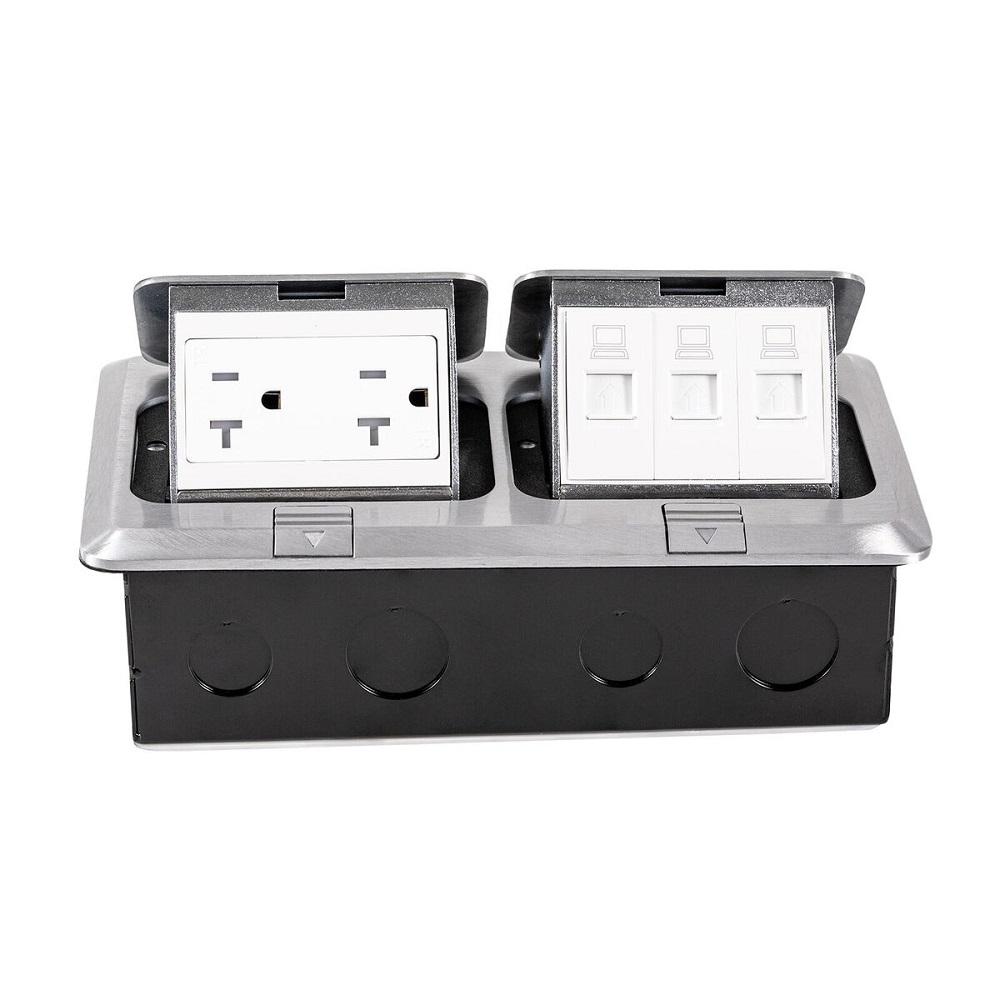Introduction to Electrical Receptacles
Receptacle in electrical, commonly known as outlets, serve as crucial connection points to supply power to a wide array of devices. These components are fixtures in our homes, workplaces, and various other settings, providing an interface between electrical systems and our devices. Receptacles come in many forms, each designed to support specific applications and safety requirements. Understanding their functionalities is key to optimizing their use and ensuring safety when powering up devices.
From the ubiquitous duplex receptacles in residential spaces to specialized USB charging outlets that cater to our modern tech needs, this blog will explore the diverse world of receptacles. We’ll delve into common types found in homes and offices, examine heavy-duty options for commercial and industrial applications, and spotlight advanced features that enhance safety. Additionally, we’ll address the significance of professional installation to guarantee proper function and safety. Whether you’re powering a lamp, a computer, or a large appliance, knowing more about receptacles will empower you to make informed decisions about the electrical systems around you.
Common Types of Receptacles in Homes and Offices
The spaces we live and work in are often equipped with several types of receptacles. In homes and offices, certain receptacles are more commonly used due to their convenience and functionality. Below, we’ll identify and explain these common types to help you recognize and utilize them effectively.
Duplex Receptacles
Duplex receptacles are the standard in most homes and offices. They accommodate two plugs simultaneously. You’ll find these receptacles in a range of colors and amperage ratings, usually 15A or 20A. They enable the use of multiple devices in a single location, such as a desk or kitchen counter.
Decorator and Hospital-Grade Receptacles
Decorator receptacles have a sleeker, more modern look. They often come with added features like dimming controls or integrated USB ports. Hospital-grade receptacles provide heightened safety and reliability. They feature mechanical shutter systems to prevent accidental insertion of foreign objects. Their robust construction meets the rigorous demands of medical environments.
Receptacles are fundamental to our daily electric needs, and while they might seem like simple components, remember that their role is vital. They ensure our gadgets and appliances receive power safely and effectively. From the duplex outlets that power our basic household devices to the advanced decorator and hospital-grade options, these receptacles cater to various requirements, preferences, and safety considerations.
Selecting the right receptacle in electrical setups is crucial. Always consult with a professional when in doubt about which type suits your needs. Next up, we’ll explore power outlets designed for heavier-duty applications seen in commercial and industrial settings.

Power Outlets for Commercial and Industrial Use
Commercial and industrial settings often require specialized power outlets. These are designed for high power applications and challenging environments. In this section, we will discuss types of receptacles that are frequently used in such settings.
Commercial-Grade Receptacles
Commercial-grade receptacles are built tough to handle frequent use. They are found in businesses, schools, and other facilities with high traffic. These outlets can resist wear and tear, making them reliable for daily operations. They often come with safety features like weather resistance and the ability to ground electrical currents effectively.
Range and Dryer Outlets
For heavy-duty appliances, range and dryer outlets are essential. They provide the power needed for appliances like stoves and clothes dryers. These receptacles handle higher amperage to accommodate large machines. They are crucial in both residential and commercial kitchens and laundry rooms.
Power outlets for commercial and industrial use must be durable, reliable, and safe. Understanding the role of each can help ensure that you choose the right receptacle in electrical projects. If you’re unsure, always seek guidance from a professional electrician.
Specialty Receptacles
While basic receptacle types serve everyday power needs, specialty receptacles cater to specific functions.
USB Charging Outlets
We use many USB-powered devices daily. USB charging outlets have become a modern necessity for this reason. These outlets combine standard plug interfaces with USB ports. This design lets users charge devices directly without adapters.
Here’s what to know about USB outlets:
- Convenience: They allow charging of smartphones, tablets, and other USB devices without occupying plug space.
- Variety: They come in configurations like 120v outlets with USB ports or all USB ports.
- Installation: They fit into the same space as regular outlets, for easy upgrades.
With more gadgets in our lives, replacing regular outlets with USB outlets is practical. They reduce clutter and make power sources readily available for charging needs.
Such upgrades are not only about convenience but also about adapting to shifting tech trends. Usually, a professional electrician can easily install USB outlets where standard ones once were.
As technology evolves, receptacles like these are becoming a staple in modern homes and offices. They underline the importance of aligning our electrical infrastructure with our digital lifestyles.

Safety Features in Modern Receptacles
Modern receptacles come with safety features to reduce risks such as electric shock.
Mechanical Shutter Systems
Mechanical shutter systems prevent foreign objects from being inserted into receptacles. They are mostly found in higher-grade outlets like those used in hospitals. These shutters open only when a proper plug is inserted.
Tamper-Resistant Receptacles
Tamper-resistant receptacles have built-in barriers to prevent children from inserting unwanted items. They need equal pressure from a plug to open, providing an extra layer of safety. These outlets are now a standard for new and renovated homes.
To ensure safe power use, look for receptacles with these safety features. Always consider calling a licensed electrician for advice and installation.
The Importance of Professional Installation
When it comes to installing electrical receptacles, professional expertise is essential. There are several reasons why professional installation is not only beneficial but often necessary for safety and compliance with local codes.
Ensuring Safety
A professional electrician ensures that receptacles are installed safely. They understand electrical systems, can identify hazards, and know how to avoid them. Proper installation minimizes the risk of electrical fires or shocks.
Code Compliance
Electricians are knowledgeable about building codes and regulations. They’ll make sure your receptacles meet local electrical codes. This compliance is crucial for insurance purposes and resale value.
Proper Functionality
Experts guarantee that your receptacles function as intended. They’ll choose the right receptacle for the electrical load and demand. They can also assess the need for specialty receptacles and install them accordingly.
Advanced Features
Installing receptacles with advanced safety features like mechanical shutter systems or tamper-resistant designs requires expertise. A professional will ensure these features function correctly to protect your home.
Choosing to hire a professional electrician might seem like an added cost, but it is an investment in reliability, safety, and peace of mind. The receptacle in electrical installations serves as the bridge between your devices and the power supply. Entrusting their installation to a professional is key.

Innovations and Future Trends
The landscape of electrical receptacles is continuously evolving to match the pace of technological advancements. As we look to the future, several cutting-edge trends are emerging, shaping the way we use and interact with power sources.
Wireless Charging Receptacles
Wireless charging receptacles represent a significant leap in convenience and aesthetics for users. With the rise of wireless technology, these outlets allow for charging devices by simply placing them on or near the charging pad, eliminating the need for cables.
- Cable-free charging: No more clutter from multiple cords; place your device on the pad.
- Furniture integration: Some outlets are designed to be installed within furniture for seamless use.
- Compatibility: They work with many phones and tablets that support wireless charging.
Smart Receptacle Technology
Smart receptacles are revolutionizing the concept of the traditional power outlet. Users can manage these innovative outlets remotely through apps, offering enhanced control and energy management.
- Remote control: Turn off or on outlets from your phone, even when away from home.
- Energy tracking: Monitor power usage and save on electricity bills by identifying high-energy appliances.
- Timer functions: Set schedules for devices to power on or off automatically, adding convenience.
Incorporating these advancements in receptacle technology not only meets the demand for smarter homes and offices but also supports sustainability goals, as users can optimize energy consumption like never before. Hiring a professional for installation ensures that you reap the full benefits of these futuristic solutions.
Stay tuned to modern improvements to maximize the efficiency and safety of your electrical system. It’s an exciting time for receptacle technology, with new features poised to make our lives easier and greener.